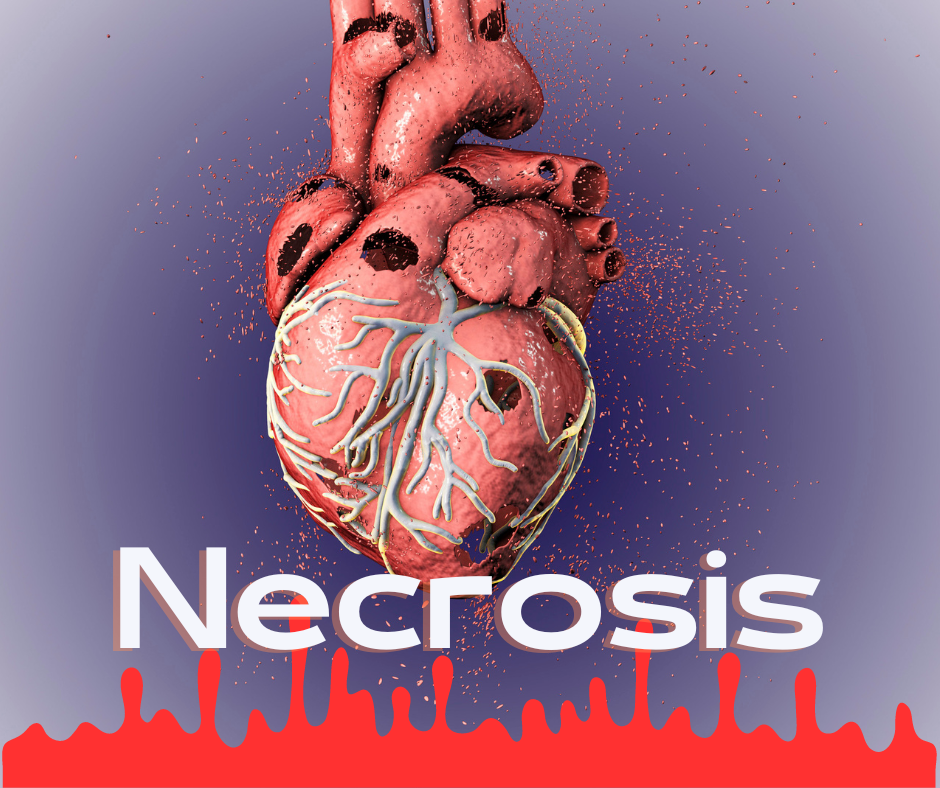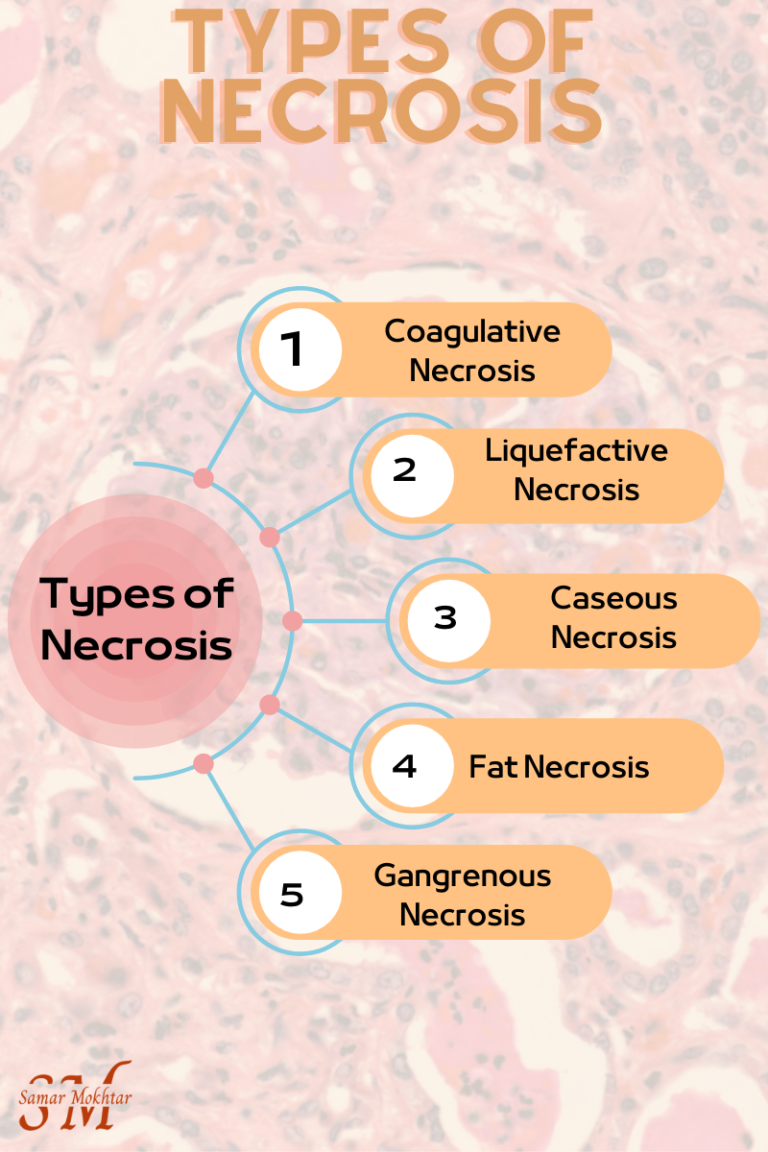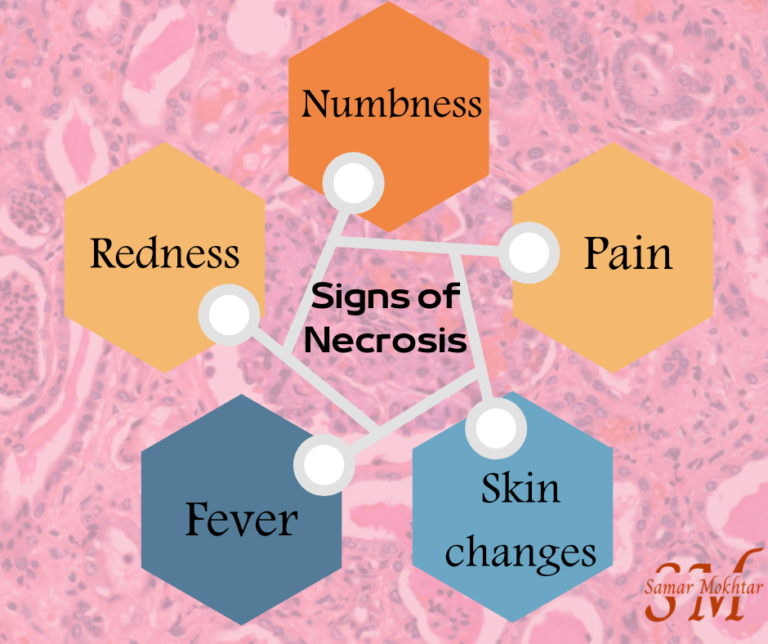What is necrosis?
Necrosis is a pathological process that occurs when cells in living tissue die due to factors such as injury, infection, or lack of blood supply.
Necrosis is a type of cell death that is characterized by a series of biochemical events that result in the breakdown of cell membranes, release of cellular contents, and inflammation.
Identifying the type of necrosis present in a tissue sample is crucial for determining the underlying cause of cell death and selecting the appropriate treatment options.
The types of necrosis
There are several different types of necrosis, each with its own unique features and causes.
Here are some of the most common types of necrosis:
1- Coagulative necrosis:
This type of necrosis occurs when cells die due to lack of blood supply.
The affected tissue becomes firm and pale, and the cellular architecture is preserved for a period of time.
2- Liquefactive necrosis:
This type of necrosis occurs when the tissue is digested by enzymes, resulting in the formation of a fluid-filled cavity.
This type of necrosis is often seen in the brain, where it is known as cerebral infarction.
3- Caseous necrosis:
This type of necrosis is characterized by the formation of a cheesy, granular material in the affected tissue.
This type of necrosis is often seen in tuberculous infections.
4- Fat necrosis:
This type of necrosis occurs when fatty tissue is damaged, resulting in the release of fatty acids and the formation of calcium deposits.
This type of necrosis is often seen in the breast, pancreas, and other organs that contain large amounts of fatty tissue.
5-Fibrinoid Necrosis
Fibrinoid necrosis is necrosis that occurs within blood vessels. It is triggered by immune reactions that damage blood vessels.
6- Gangrenous necrosis:
This type of necrosis occurs when a large area of tissue dies due to lack of blood supply.
The affected tissue becomes black and may produce a foul odor.
What are the early signs of necrosis?
The early signs of necrosis depend on the type of necrosis and the affected tissue or organ.
However, there are some general signs and symptoms that may indicate the development of necrosis:
1- Pain:
Pain is a common early symptom of necrosis. The pain may be localized to the affected area and may be accompanied by swelling and tenderness.
2- Redness:
Redness around the affected area may be an early sign of necrosis.
This may be due to inflammation caused by the death of cells and release of cellular contents.
3- Skin changes:
Changes in the color, texture, or appearance of the skin around the affected area may be an early sign of necrosis.
The skin may become pale, discolored, or have a bluish tint.
4- Numbness:
Numbness or tingling around the affected area may be an early sign of necrosis.
This may be due to damage to nerves or blood vessels.
5- Fever:
A low-grade fever may be present in some cases of necrosis, especially if the underlying cause is an infection.
It is important to note that not all cases of necrosis present with early signs and symptoms. In some cases, necrosis may progress silently and only become apparent when significant tissue damage has occurred. Therefore, it is important to seek medical attention if you suspect that you may have necrosis or any other condition affecting your tissues or organs. Early diagnosis and treatment can improve outcomes and prevent complications.
Treatment of necrosis
Treatment of necrosis depends on the underlying cause and the extent of tissue damage. In some cases, surgical removal of the affected tissue may be necessary.
In other cases, supportive care and treatment of the underlying cause may be sufficient to allow the body to heal.
In conclusion,
Necrosis is a complex pathological process that can have serious consequences for affected tissues and organs. Understanding the different types of necrosis and their causes is important for effective diagnosis and treatment of this condition.






